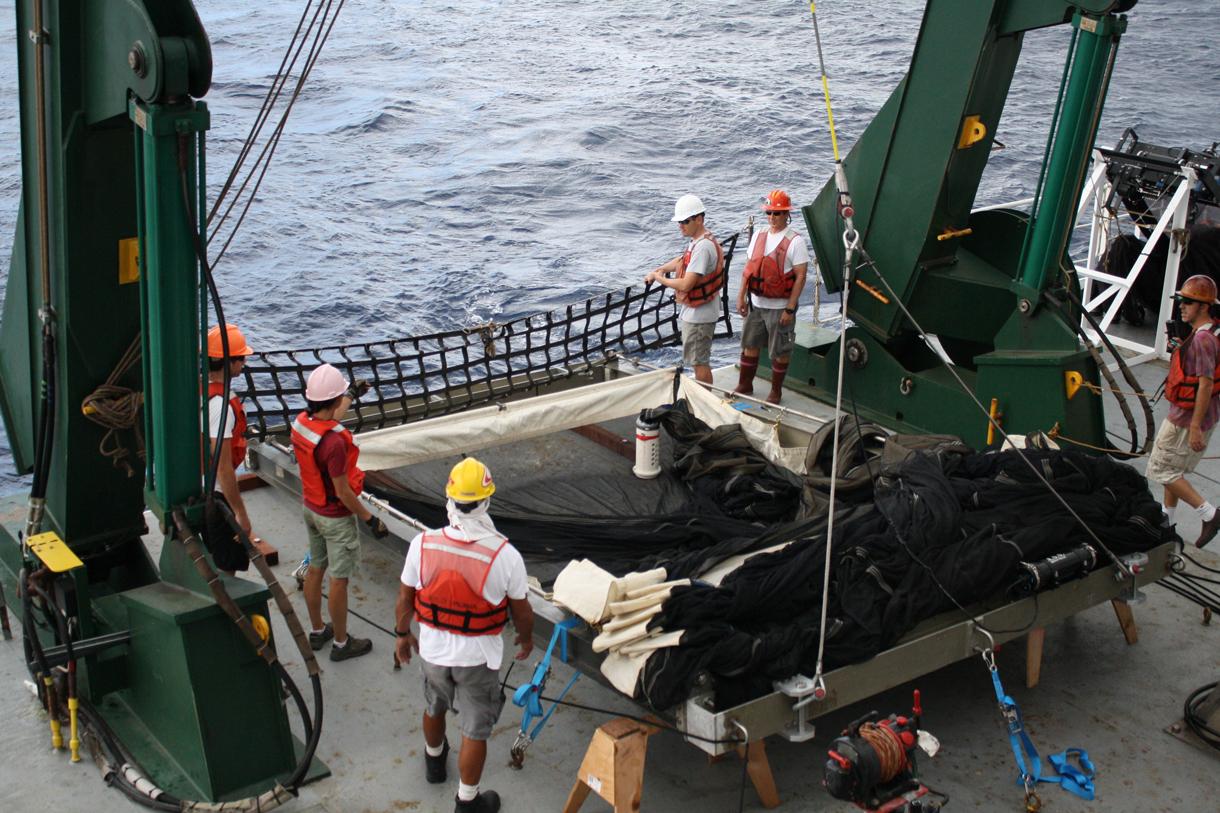New study examines how mercury in fish develops
Marine technician Meghan Donohue carefully directs the launch of a net to catch research fish. The net consists of different bundles that can be selectively opened to catch fish at specific depths. (Photo by Jeff Drazen.)
Eating fish can be beneficial to your health — as long as the fish you choose isn’t laced with contaminants such as mercury.
The body can metabolize small amounts of mercury, but too much is toxic to the brain and nervous system, and children and fetuses are most vulnerable. For years, scientists have noticed that deep sea fish contain more mercury than fish from shallower waters.
Now, a paper published in Nature Geoscience, written by University of Michigan geochemistry professor Joel Blum, explains why different fish contain different amounts of mercury.
It’s been understood for some time, Blum said, that the deeper a fish lived in the ocean, the greater the concentrations of mercury in the fish. But why was harder to parse. Until now.
There are numerous different kinds of mercury in the environment, but, according to Blum’s research, it’s methyl mercury, that is taken up into fish and is most toxic.
“What we found in our study is that methyl mercury is formed in the ocean, in a variety of different depths in the ocean,” Blum said. “But when it forms near the surface of the ocean, sunlight breaks down the methyl mercury back to its common form, and therefore essentially detoxifies it. But deeper in the ocean, where there is no sunlight, this process doesn’t take place.”
The toxic mercury builds up, and is then incorporated into the food web and — ultimately — into fish.
In general, most of the mercury that’s in the ocean comes from the atmosphere, deposited into the ocean through rainfall.
“The main source of mercury in the atmosphere is the combustion of coal that we use to produce energy,” Blum said.
But most of the mercury in the atmosphere is not this toxic methyl mercury. The inorganic mercury in the atmosphere is processed by bacteria and becomes methyl mercury.
“One of the things we found in our study is this processing, or this methylation, can happen in the open ocean, which we didn’t previously realize,” Blum said.
Interestingly, there’s no indication that fish are harmed by the presence of mercury — even at levels that would have an adverse impact on humans, Blum added.
Blum’s research focused exclusively on species of fish people are likely to eat: several different types of tuna, swordfish and other species of Pacific Ocean fish commonly eaten.
And while Blum’s study looked exclusively at Pacific Ocean fish, he said mercury levels in the Atlantic are similar.
“There’s a recent study that compared mercury in the Atlantic and Pacific Ocean, and it seems that mercury in the Atlantic over time is decreasing somewhat, which is believed to be the effect of reduced emissions of mercury for North America,” Blum said. “Mercury in the Pacific Ocean is on the increase due to increased emissions from the Asian continent.”
If you’re worried about mercury in fish, Blum’s research showed the highest levels were in swordfish.
“Swordfish are top predators, and they also live deep in the ocean, and that kind of double whammy gives you the highest levels,” he said. “Those are fish that one really has to consider how much they eat because the exposure to mercury is really quite significant.”
